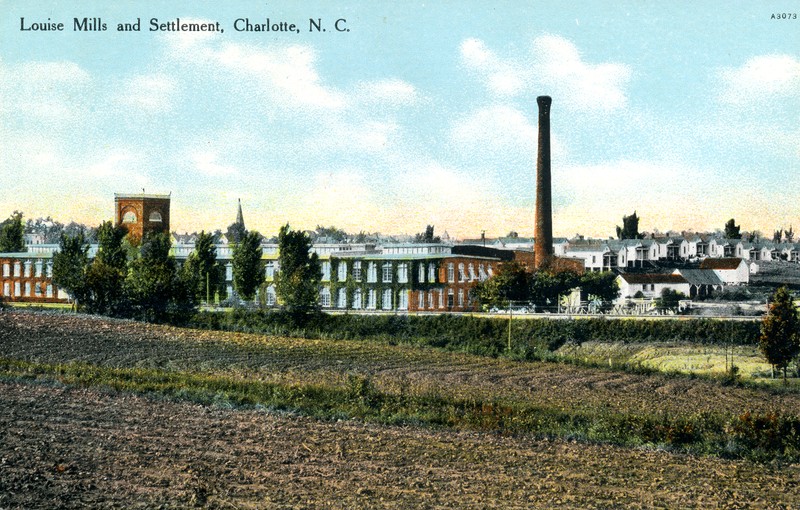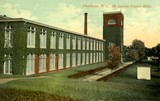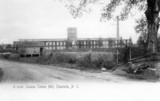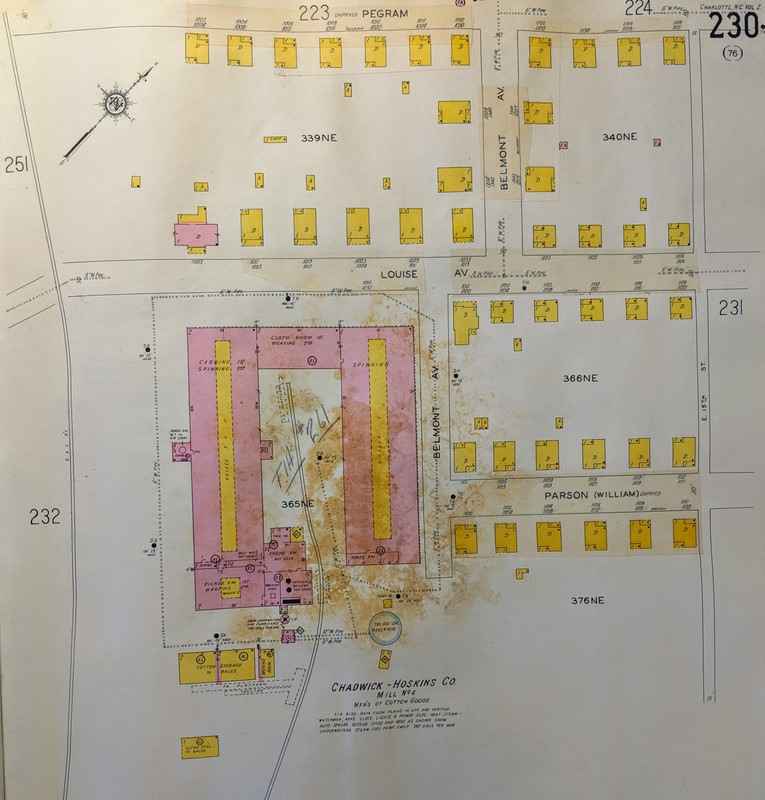Louise Cotton Mill
Introduction
Author-Uploaded Audio
Listen to a narration of this entry's description by UNCC Urban Institute User.
Text-to-speech Audio
Images
Louise Mill with mill houses

2019

Early image of the mill

2020

Sandborn Map of Mill and housing

Backstory and Context
Text-to-speech Audio
A nearby stream, which ran along the route of today’s Hawthorne Lane, was dammed to provide a mill pond. This water was used, not for power but rather as insurance against fire. Water mains ran from the pond to a pump house and throughout the mill.
Louise Mill began as a 10,000 spindle hosiery mill and expanded in 1901 to add two large wings and a courtyard, creating the mill’s unique U-shape. For sixty years, from 1897 to 1957, the mill was steadily in operation as a cotton mill. The community thrived in this early half of the century, but by the late 1950s, mills were closing and plants were relocating. The neighborhood began at the edge of Charlotte’s nineteenth-century boundary but now found itself in the urban inner-city as newer subdivisions attracted residents to more prosperous suburban areas.
Ownership of the Louise Mill building changed multiple times after it closed, and its uses varied until 2018 when the historic structure was reimagined and turned into housing, called The Lofts at Hawthorne Mill. This meticulous conversion into loft spaces kept the nineteenth-century Southeastern textile mill architecture. The craftsmanship includes the original five-course masonry facade, the heavy timber interior, and 12-foot window openings with segmental-arched tops. Today, the Louise Mill is listed in the National Register of Historic Places and is one of only three intact cotton mills that survived in the city from the late nineteenth century.
We’ll continue our tour by heading north on Louise Avenue toward Belmont Avenue. You will cross Louise Avenue and look for the medallion on the sidewalk near the stop sign.
